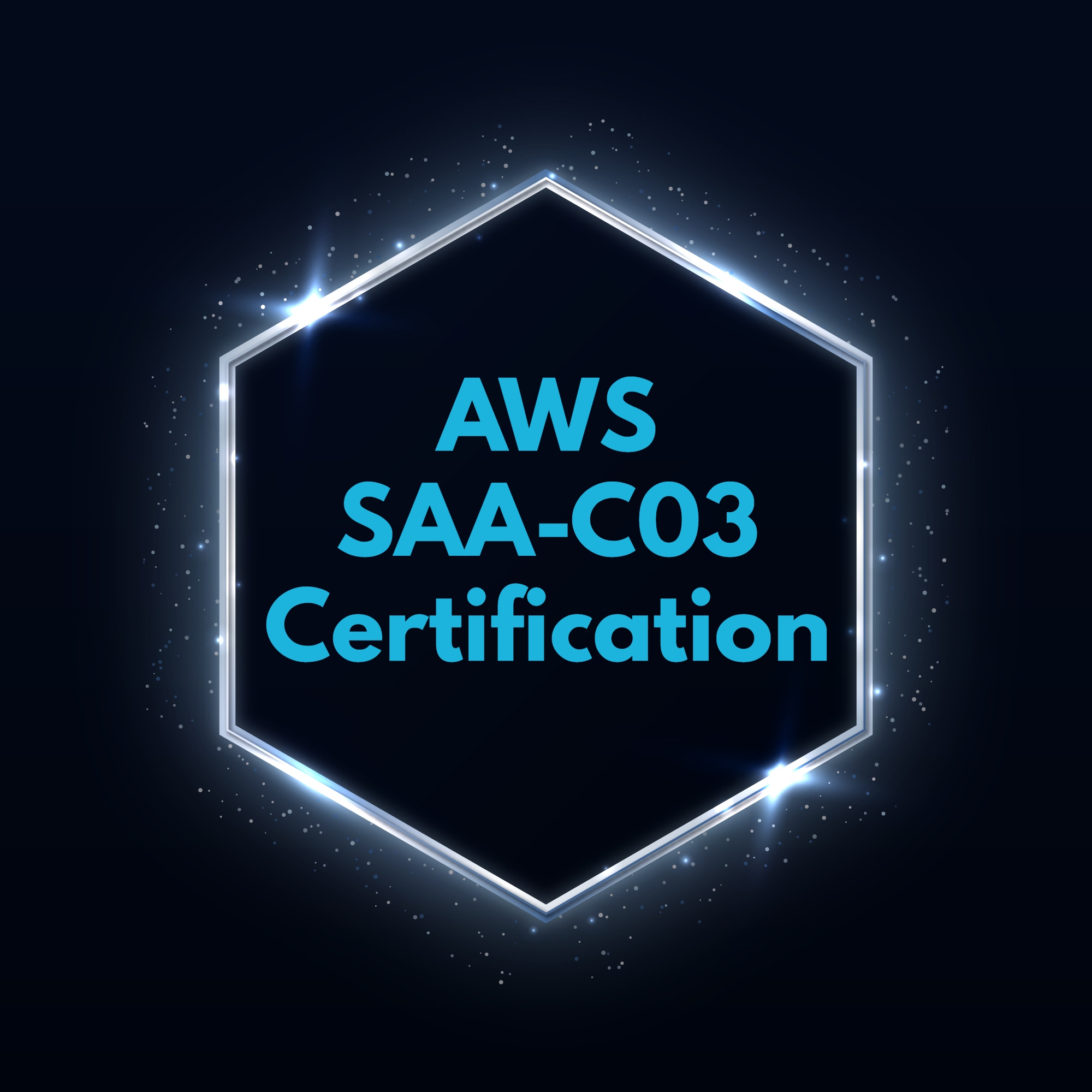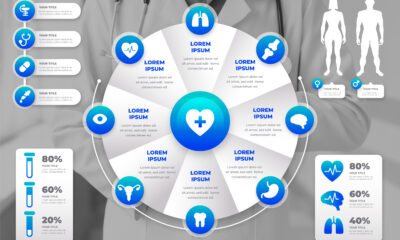Education
How to Apply for the AWS SAA-C03 Certification?

Are you ready to take your career in the cloud to new heights? Look no further than the AWS SAA-C03 certification! With the ever-increasing demand for skilled cloud professionals, this certification can open doors to exciting opportunities and help you stand out from the crowd. But how exactly do you apply for this prestigious credential? In this blog post, we’ll guide you through the exam format and requirements, share valuable study materials, emphasize the importance of hands-on experience, and help you determine if the AWS SAA-C03 certification is right for you. So buckle up and get ready to soar into a world of limitless possibilities with AWS!
Exam Format and Requirements
The AWS SAA-C03 dumps certification exam consists of multiple-choice and multiple-response questions designed to assess your knowledge and understanding of various AWS services, architectural best practices, and overall cloud concepts. You’ll have a total of 130 minutes to complete the exam, so time management is crucial.
To be eligible for this exam, it’s recommended that you possess at least one year of hands-on experience designing distributed applications on the AWS platform. Additionally, having a solid understanding of core AWS services like EC2, S3, VPCs, Lambda functions, and RDS will greatly enhance your chances of success.
When it comes to prerequisites, there are no mandatory requirements for taking the AWS SAA-C03 exam. However, it’s highly advised that you have a basic understanding of IT fundamentals such as networking protocols (TCP/IP), IP addressing schemes (CIDR blocks), and general security principles.
To schedule your exam appointment with Pearson VUE – the official testing provider for Amazon Web Services certifications – simply create an account on their website and select a convenient date from the available options. Remember to check if online proctoring is available in your region for added flexibility.
Study Materials for the AWS SAA-C03 Exam
When it comes to preparing for the AWS SAA-C03 exam, having the right study materials is essential. With so much information available, it can be overwhelming to know where to start. However, with a little guidance, you can find the resources that will help you succeed.
First and foremost, make sure to utilize the official AWS Certified Solutions Architect – Associate Exam Guide. This comprehensive resource covers all the domains and objectives of the exam in detail. It provides a solid foundation for your preparation and ensures you have covered all the necessary topics.
In addition to the official guide, there are various online platforms that offer practice exams and study materials specifically designed for the SAA-C03 exam. These resources often include sample questions with detailed explanations and even simulations of real-world scenarios.
The Importance of Hands-On Experience
Hands-on experience is a crucial aspect of preparing for the AWS SAA-C03 certification. While studying theory and understanding concepts are important, applying that knowledge in real-world scenarios can significantly enhance your understanding and retention.
By getting hands-on with AWS services, you gain practical insight into their functionality and learn how to navigate through different scenarios. This practical experience allows you to build confidence in using various tools and services offered by Amazon Web Services.
Conclusion: Is the AWS SAA-C03 Certification Right for You?
After exploring the exam format, study materials, and the importance of hands-on experience for the AWS SAA-C03 certification, you may be wondering if it is the right choice for you. This decision depends on your career goals and aspirations.
If you are looking to establish yourself as a skilled professional in cloud computing and AWS services, obtaining the AWS Certified Solutions Architect – Associate certification can provide numerous benefits. It not only validates your knowledge and expertise but also opens up new opportunities in top organizations that rely on AWS infrastructure.
However, it’s important to note that this certification requires dedication and effort. The exam covers a wide range of topics related to architecture design principles, deployment best practices, cost optimization strategies, security measures, and more. Therefore, individuals who have prior experience or are willing to invest time in comprehensive studying will likely find success in achieving their desired result SPOTO AWS.
Education
Unraveling the Wonders of Skypessä: A Comprehensive Guide

Skypessäs, a term that sparks curiosity and intrigue, holds a myriad of possibilities. In this comprehensive guide, we delve into the depths of skypesss, exploring its nuances, applications, and the impact it can have in various contexts.
Understanding Skypessä: A Brief Overview
Skypessä, a term that might sound unfamiliar at first, is a concept that transcends traditional boundaries. It encompasses a unique blend of innovation, connectivity, and user experience. Let’s dissect the layers of skypessäs to understand its essence.
Unveiling the Origins of Skypessä
The roots of skypessä trace back to a convergence of technology and communication. Understanding its origins helps us appreciate the evolution of this fascinating phenomenon.
The Intricacies of Skypessä Technology
Diving into the technological aspects, skypess is more than just a word—it’s a technological marvel. Here, we explore the intricacies of skypessas technology, breaking down the components that make it tick.
Skypessä and Connectivity: Bridging Distances
At its core, skypess thrives on connectivity. We explore how this technology seamlessly bridges distances, connecting people in ways that were once unimaginable.
User Experience in Skypessä: A Journey Through Seamless Interaction
In the realm of skypess, user experience takes center stage. We dissect the elements that contribute to a seamless and engaging interaction within the skypessäs environment.
Perplexity and Burstiness in Skypessä: Striking the Balance
A crucial aspect of skypessäs is the delicate balance between perplexity and burstiness. We examine how skypesss manages to maintain high levels of both, providing a dynamic and versatile user experience without losing specificity or context.
Perplexity: Navigating Complexity in Skypessä
In the ever-evolving landscape of skypess, perplexity adds depth and sophistication. We explore how skypessäs navigates complexity, offering users a rich and fulfilling experience.
Burstiness: The Dynamic Pulse of Skypessä
The dynamic pulse of skypess lies in its burstiness. We unravel the vibrancy and energy that characterize skypess, ensuring that users stay engaged and captivated.
Crafting Content in Skypessäs: The Art of Engagement
When it comes to creating content within the skypess framework, it’s an art that requires finesse. We delve into the strategies and techniques that enhance content creation in the skypessäs realm.
Utilizing Formal “We” Language: A Mark of Professionalism
In crafting content for skypessäs, the use of formal “we” language adds a touch of professionalism. We explore how this linguistic choice enhances the overall tone and communication.
Engaging the Reader: The Heartbeat of Skypessä Content
Engaging the reader is paramount in skypess content creation. We unravel the strategies that captivate the audience, keeping them hooked from the first word to the last.
A Conversational Style in Skypessä: Connecting on a Human Level
Skypess thrives on human connection, and adopting a conversational style adds a personal touch. We explore the nuances of writing in a way that resonates with the audience, using personal pronouns, simplicity, and the active voice.
Keeping it Simple: The Power of Simplicity in Skypessä
Simplicity is key in skypess communication. We discuss how keeping it simple enhances understanding and fosters a more enjoyable user experience.
Using Rhetorical Questions: Igniting Curiosity in Skypessä
Rhetorical questions play a strategic role in skypess content. We delve into how these questions can ignite curiosity and keep the audience actively engaged.
Incorporating Analogies and Metaphors: Painting Vivid Pictures in Skypessä
Analogies and metaphors add color to skypessäs content, making it more relatable. We explore the art of incorporating these literary devices to paint vivid pictures in the minds of the audience.
Conclusion: Unleashing the Full Potential of Skypessä
In conclusion, skypessäs is not just a term—it’s a gateway to boundless possibilities. Embracing the marvel of skypessäs opens doors to new horizons in technology, connectivity, and user experience.
Education
How to Get a PMP Certification: An Overview

Are you ready to take your project management career to the next level? If so, obtaining a Project Management Professional (PMP) certification may be just what you need. Widely recognized and highly respected in the industry, a PMP certification can open doors to new opportunities, higher salary potential, and increased credibility as a project manager.
In this article, we will guide you through the process of getting PMP certified step by step. From understanding the requirements to preparing for the exam and maintaining your certification status, we’ve got you covered. So let’s dive in and explore how you can embark on this exciting journey towards becoming a certified PMP professional!
Requirements for PMP Certification
To become a certified Project Management Professional (PMP), there are certain requirements you must meet. These requirements ensure that candidates have the necessary knowledge and experience to excel in project management.
First and foremost, you need to have a four-year degree from an accredited university or college. This could be a bachelor’s degree or the global equivalent. In addition to this, you should also have at least three years of project management experience, with 4,500 hours leading and directing projects.
If you don’t have a four-year degree, don’t worry! You can still apply for pmp certification dumps free download if you hold a secondary diploma (high school diploma) or equivalent. However, in this case, your project management experience requirement increases to five years, with 7,500 hours leading and directing projects.
Steps to Get PMP Certified
To become a certified Project Management Professional (PMP), you need to follow a few important steps. These steps will guide you through the process and help you achieve your certification.
1. Determine your eligibility: Before applying for the PMP exam, make sure you meet the eligibility criteria set by the Project Management Institute (PMI). This includes having a certain level of education and relevant work experience in project management.
2. Familiarize yourself with the PMBOK Guide: The Project Management Body of Knowledge (PMBOK) is an essential resource for PMP candidates. It provides valuable information on project management concepts, processes, and best practices that are covered in the exam.
3. Submit your application: Once you confirm your eligibility, it’s time to fill out the application form on PMI’s website. Be thorough and accurate when documenting your project management experience to avoid any delays or rejections.
4. Study diligently: Preparing for the PMP exam requires dedication and commitment. Create a study plan that covers all knowledge areas outlined in the PMBOK Guide and utilize various study resources such as books, online courses, practice exams, and peer discussions.
5. Schedule your exam: After completing your studies and feeling confident about your knowledge, schedule your PMP exam at one of PMI’s designated testing centers. Choose a date that allows enough time for final review without rushing through last-minute preparations.
Remember that becoming PMP certified requires effort, but it also opens up new career opportunities in project management across various industries globally.
Preparing for the Exam
When it comes to getting your PMP certification, preparation is key. The exam is challenging and comprehensive, so you’ll want to make sure you’re ready for anything that comes your way. Here are a few tips to help you prepare effectively.
Create a study schedule that works for you. Set aside dedicated time each day or week to focus on studying. This will help keep you accountable and ensure that you’re putting in the necessary effort.
Next, familiarize yourself with the PMBOK Guide (Project Management Body of Knowledge). This is the primary resource used for the PMP exam and covers all areas of project management knowledge. Take the time to thoroughly understand each section and its concepts.
Resources for Studying and Practicing for the Exam
When it comes to studying and practicing for the PMP exam, having the right resources is key. Luckily, there are plenty of options available to help you prepare effectively.
One valuable resource is the Project Management Body of Knowledge (PMBOK) Guide. This guide is considered the bible of project management and provides a comprehensive overview of all the knowledge areas covered in the exam. It’s important to thoroughly study this guide and understand its concepts.
In addition to the PMBOK Guide, there are many other books and study materials available that can supplement your preparation. Look for reputable authors or organizations that offer practice exams, sample questions, and study guides tailored specifically for the PMP exam.
Online courses and training programs can also be extremely helpful in preparing for the exam. These courses often provide structured lessons, video tutorials, interactive quizzes, and simulated exams that mimic the actual test environment.
Joining a study group or participating in online forums dedicated to PMP certification can provide valuable insights from others who are also preparing for the exam. Sharing experiences, discussing challenging topics, and seeking clarification on difficult concepts can greatly enhance your understanding.
After Getting Certified: Maintaining Your PMP Status
After successfully obtaining your PMP certification, the journey doesn’t end there. It’s important to maintain your PMP status by fulfilling certain requirements and staying up-to-date with industry standards. Here are some key points to consider when it comes to maintaining your PMP status.
Continuing Education: As a certified project management professional, you must earn 60 Professional Development Units (PDUs) every three years. PDUs can be earned through various activities such as attending seminars, webinars, workshops, or even writing articles related to project management.
Renewal Process: The renewal process is relatively straightforward. You need to log in to the PMI website and report your earned PDUs within the three-year cycle. Once you have completed the required number of PDUs, you can submit an online application for renewal.
Staying Active in Project Management Community: Networking and staying connected with other professionals in the field is crucial for career growth and knowledge enhancement. Joining professional associations or participating in local chapter events can provide excellent opportunities for learning from peers and sharing experiences.
Conclusion
Obtaining a PMP certification is a significant achievement that can open doors to new career opportunities and enhance your project management skills. By following the requirements and steps outlined in this article, you will be well on your way to becoming a certified Project Management Professional.
Remember, it’s essential to meet the eligibility criteria before applying for the exam and thoroughly prepare yourself through studying and practicing with reliable resources. Don’t forget to utilize online courses, study guides, practice exams, and other helpful materials.
Once you have earned your PMP certification, it’s crucial to maintain your status by earning PDUs through continuing education activities. This ensures that you stay up-to-date with the latest industry standards and practices spoto dumps.
So what are you waiting for? Take control of your professional development today by pursuing a PMP certification. With dedication and hard work, you’ll join the ranks of skilled project managers who are making an impact in their organizations.
Start this transformative journey towards achieving your career goals – become a certified Project Management Professional!
Read more: Quizziz Whiz: Turn Boredom into Brainpower!
-

 Technology6 months ago
Technology6 months agoAdopting Professional Service Automation for Improved Efficiency and Cost Savings
-

 Technology6 months ago
Technology6 months agoSmart Money with Fibahub: Your Future Starts Now!
-

 Sports7 months ago
Sports7 months agoAllod Sports: Transform Hobbies, Live Adventures!
-

 Entertainment8 months ago
Entertainment8 months agoThe Flower of Veneration Chapter 1: Unveiling Secrets
-

 Technology7 months ago
Technology7 months agoTickzoo Unleashed: Dive into the Craze
-

 Gaming Portion8 months ago
Gaming Portion8 months agoSnow Rider 3D Unblocked: Unleashing Winter Excitement
-

 Health8 months ago
Health8 months ago10Desires.org: Your Path to Ultimate Health!
-

 Technology8 months ago
Technology8 months agoHDTVToday: Redefining Entertainment for You!
